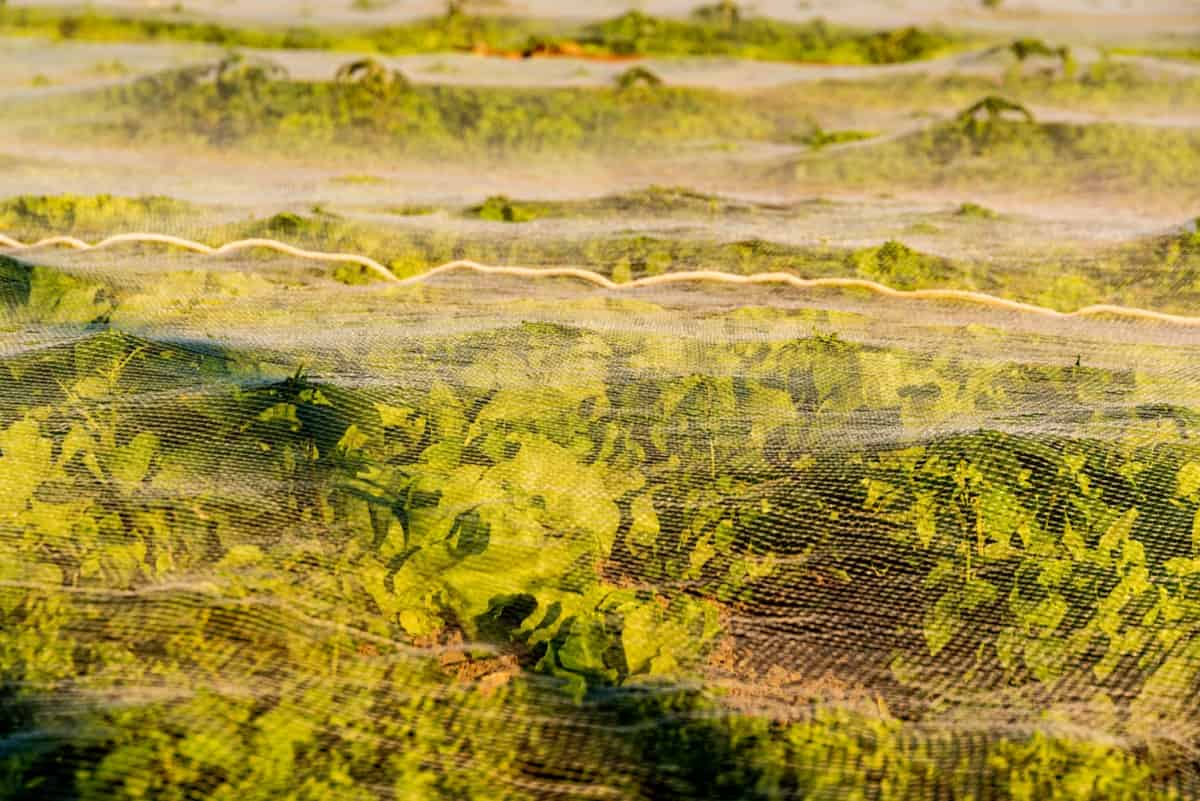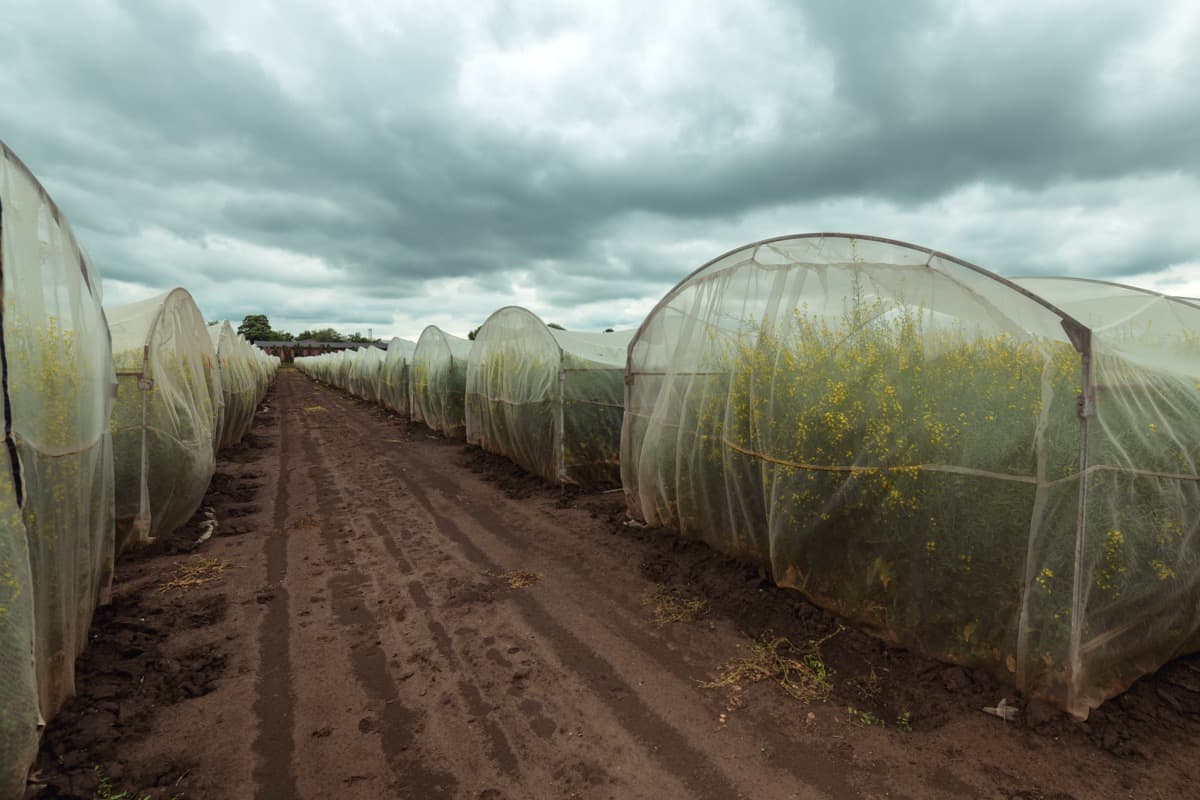Welcome to our guide on how to build a shade house from scratch! Having a shade house in your garden can provide various benefits, including protection from the sun and wind and a place to relax and enjoy your outdoor space. Building a shade house can seem daunting, but with our simple steps, you’ll be able to create a beautiful and functional structure in no time.

We’ll take you through planning and building your shade house, including selecting the right location, choosing materials, and constructing the frame. We’ll also provide tips on customizing your shade house to suit your needs and style. Whether you’re a seasoned DIYer or a beginner, our guide is designed to make the building process as easy and straightforward as possible.
A shade house adds value to your garden and property. It provides a perfect spot to host family and friends, relax, and enjoy the outdoors. So, let’s get started on building your very own shade house! With our step-by-step guide, you’ll have your own beautiful and functional shade house in no time.
How to build a shade net house
What is a shade net house in the garden?
A shade Net house in a garden is a structure that protects from direct sunlight for plants that require partial or complete shade to thrive. It may be a simple structure, such as a covered area with mesh or fabric to filter the sunlight, or a more complex structure, such as a greenhouse with adjustable shading systems. Shade net houses are commonly used for growing delicate or tropical plants or starting seedlings that need protection from the sun before transplanting to the garden.
It is very damp and humid during the wet season, making it the perfect time for planting seeds. To protect the seedlings from rain and insects, we can build a quick and easy shade house using low-cost materials from recycling centers. It will ensure that the seedlings can be protected till transplanted into the vegetable garden during the dry season.
Benefits of using shade net house in the garden
- Protection from direct sunlight: Shade net houses protect from the sun’s intense rays, allowing plants to grow and thrive in a comfortable environment.
- Temperature regulation: Shade net houses can help to regulate the temperature inside, keeping it cool during hot days and warmer during cool nights.
- Pest control: Shade net houses can help to keep pests, such as insects and birds, away from plants, reducing the need for pesticides.
- Water conservation: Shade net houses can help to reduce water evaporation, allowing plants to retain more moisture and reducing the need for frequent or regular watering.
- Increased yields: By providing the ideal growing conditions, shade net houses can increase plant yields and improve the quality of fruits and vegetables.
- Cost-effective: Shade net houses are relatively inexpensive to build and maintain, making them a cost-effective solution for protecting plants.
- Increased versatility: Shade net houses can grow a wide range of plants, including delicate or tropical varieties, and can be adjusted to provide different shade levels.
In case you missed it: How to Build a Hydroponic Unit with PVC Pipes: DIY in Simple Steps

Things to think about before building a shade house
When building a shade house, it is essential to consider the wind conditions in the area, as a strong structure is needed to withstand heavy winds. Steel pipes are a good option, as they are easy to manage and can easily be fastened to the shade net. Additionally, the structure can also be used as a trellis for climbers and creepers, so the minimum height of the structure should be 6.5 ft.
- Wind conditions: Make sure the structure is sturdy enough to withstand strong winds in your area.
- Material: Consider using steel pipes as they are easy to manage and can easily be fastened to the shade net.
- Height: Keep in mind that the structure should be tall enough to serve as a trellis for climbers and creepers.
- Design and aesthetics: Think about how the shade house will look and fit in with the overall design of your outdoor space.
- Maintenance: Consider the ease of maintenance and cleaning of the shade house.
- Climate: Consider your area’s climate and weather conditions to ensure your shade house can withstand it.
- Budget: Determine the cost of materials and labor and ensure that it fits within your budget.
Construction and building of DIY shade net house for garden with PVC pipes or wooden frames
Step-by-step guide on how to construct a DIY shade net house for your garden using PVC pipes and bamboo, or any other available materials at a low cost:
Materials needed
- PVC pipes (of various sizes)
- Bamboo (or other suitable frame material)
- Shade netting
- Cable ties or zip ties
- Drill (or other tools for cutting and shaping PVC pipes)
Step 1: Plan and measure
- Measure the area where you want to build the shade net house.
- Determine the size of the frame and the amount of PVC pipes and bamboo you need.
- Sketch a rough plan of the structure.
Step 2: Assemble the frame
- Cut the PVC pipes to the appropriate length.
- Use PVC pipes and bamboo to construct the frame of the shade net house.
- Use cable ties or zip ties to fasten the frame together securely.
In case you missed it: Feed Management of Sheep and Goats: Formulation, Ingredients, Organic, DIY Feed mix, and Feeding Practices

Step 3: Attach the shade netting
- Unroll the shade netting and drape it over the frame.
- Secure the shade netting to the frame using cable ties or zip ties, ensuring the netting is taut and wrinkle-free.
Step 4: Secure the shade net house
- Use additional cable or zip ties to secure the shade net house to the ground or nearby trees or posts.
- Use side pillars to Secure the shade net house for garden plants.
Step 5: Finalize the structure
- Add additional features such as doors, windows, or ventilation per your requirement.
- Test the structure for stability and make any necessary adjustments.
How to build a DIY shade net house with steel pipes in a terrace garden or garden
Building a DIY shade net house can provide a protected environment for garden plants and vegetables while also providing shade and reducing the temperature. Here’s an overview of the material process of building a basic shade net house:
Materials required to build DIY shade net house
- Steel pipes or tubing (of various sizes), Steel connectors (such as elbows, tees, and crosses), Steel wire or cable, and Steel brackets or anchors to create the frame of the shade house.
- Shade netting cloth of 75% provides shade and protection from the sun.
- Steel cutting and shaping tools (such as a metal saw, grinder, or bolt cutters)
- Welding equipment (if welding is required to assemble the frame)
- Drill and drill bits
- Screws, nuts, and bolts
- Safety gear (such as goggles, gloves, and a face mask)
- A mesh screen door can be added for ventilation.
Note: The use of steel material will make the structure more durable and long-lasting, especially in areas with harsh weather conditions such as heavy winds, rain, or snow. However, Steel is heavy and may rust over time, depending on the environment. Therefore, you should use appropriate paint or coating to protect the Steel from rusting.
In case you missed it: Homemade Goat Feed Recipes: How to Make, Organic, Ingredients, and Simple DIY Goat Feed Mix

Construction and building of DIY shade net house with steel material
Building a shade house requires some basic knowledge of welding and metalworking. The process can be explained in four main steps:
Step 1: Erecting the outer vertical poles: The first step is to cut the steel pipes to the appropriate size for the outer vertical poles and then solder them to square rods drilled into the wall at an angle of 20-30 degrees. This angle helps keep the rod in place inside the wall.
Step 2: Fabricating the triangular trusses: Once the outer vertical poles are in place, measurements are taken for the triangular trusses fabricated from 1-inch steel pipes. These trusses are then soldered to the vertical posts. Extra support is added using flats soldered to the verticals to create a permanent trellis structure.
Step 3: Laying the horizontal bars: The final step is to lay the horizontal bars (1-inch pipe) on top of the trusses and solder them. These horizontal bars connect the three trusses and complete the structure of the shade house.
Step 4: Cleaning, painting, and adding shade cloth: Once the structure is completed, the pipes are cleaned using sandpaper and cloth and painted for protection. After the paint has dried, the shade cloth is laid on top of the structure and fastened using a UV-protected fishing net wire to ensure it will not quickly disintegrate in the heat. To give extra protection from wind, coconut fiber ropes are tied across the shade cloth from one side to the other.
Construction cost for building a shade house, which lasts 10-15 years
| Items | Approximate Cost. in INR |
| Steel pipes | 8,000 (including transport) |
| Shade netting | 1,000 |
| UV-resistant fishing net wires | 200 |
| Paint and primer | 600 |
| Fabrication charges | 5,000 |
| Total cost | 15,000 |
Note: The cost may vary depending on the location, availability of materials, and other factors. The cost per sq ft is around Rs 50, which is very reasonable. The structure is expected to last for at least 20 years, so the annual cost comes out to be under Rs 700, which is negligible.
In case you missed it: Cheap Farm Fence Ideas: DIY, Inexpensive, Low-cost, and Budget Tips

Difference between Steel/Iron frame shade net house and PVC frame made shade net house
- Durability: Steel is a stronger and more durable material than PVC. Steel structures can withstand high winds and heavy loads, making them suitable for harsher environments. On the other hand, PVC is more flexible and less likely to withstand heavy loads or strong winds.
- Cost: Steel is generally more expensive than PVC. However, steel structures will last longer than PVC structures so the cost may be more reasonable in the long run.
- Weight: Steel is a much heavier material than PVC. It means that steel structures will require more support and may be more difficult to move or reposition. PVC structures, on the other hand, are much lighter, which makes them more portable.
- Installation: Steel structures require welding or bolting, whereas PVC structures can be assembled with fittings and glue.
- Maintenance: Steel structures require regular maintenance, such as painting to prevent rusting, whereas PVC structures require occasional cleaning.
- Environmental impact: Steel is generally more environmentally friendly than PVC. Steel is more easily recyclable, whereas PVC is not.
What is the best option for a garden shade net house?
Suppose the location is an area with harsh weather conditions such as heavy winds, rain, or snow, and you want a structure that will last for a long time. In that case, the best option is a steel material shade net house. Steel is a stronger and more durable material that can withstand heavy loads and strong winds.
However, it is more expensive and requires more maintenance. On the other hand, if the location is an area with mild weather conditions and you have a limited budget, then a PVC-made shade net house may be a better option. PVC is cheaper and easy to install but needs to be stronger and more durable.
A shade house is necessary for a terrace garden because it can protect plants from direct sunlight and extreme heat, benefiting certain plants, such as ferns, flowering plants, and some types of succulents. Additionally, plants that are sensitive to direct sunlight or heat, mainly in hot summer, such as tomatoes, peppers, and certain herbs, can also benefit from a shade house.
In case you missed it: Key Rules to Start Organic Farming in Mexico: Step-By-Step, Business Plan, Certification, Policies, Subsidies, Cost, and Profit

Conclusion
Building a shade net house from scratch can be a fun and easy DIY project for your garden. With simple steps, you can create a protected environment for your plants that are sensitive to direct sunlight or heat. Following the instructions in this guide, you can build a durable and effective shade net house in no time. Not only will it protect your plants, but it also adds an aesthetic appeal to your garden. With creativity and effort, you can create a beautiful, functional shade net house that will last for years.
- Types of Pesticides Used in Agriculture: A Beginner’s Guide
- Economical Aquaculture: A Guide to Low-Budget Fish Farming
- 15 Common Planting Errors That Can Doom Your Fruit Trees
- How to Make Houseplants Bushy: Effective Tips and Ideas
- Innovative Strategies for Boosting Coconut Pollination and Yield
- Pollination Strategies for Maximum Pumpkin Yield
- The Complete Guide to Chicken Fattening: Strategies for Maximum Growth
- Natural Solutions for Tulip Problems: 100% Effective Remedies for Leaf and Bulb-Related Issues
- Revolutionizing Citrus Preservation: Towards a Healthier, Greener Future
- Natural Solutions for Peony Leaf and Flower Problems: 100% Effective Remedies
- Maximizing Profits with Avocado Contract Farming in India: A Comprehensive Guide
- Natural Solutions for Hydrangea Problems: 100% Effective Remedies for Leaf and Flowers
- The Ultimate Guide to Choosing the Perfect Foliage Friend: Bringing Life Indoors
- From Sunlight to Sustainability: 15 Ways to Use Solar Technology in Agriculture
- The Ultimate Guide to Dong Tao Chicken: Exploring from History to Raising
- The Eco-Friendly Makeover: How to Convert Your Unused Swimming Pool into a Fish Pond
- Mastering the Art of Delaware Chicken Farming: Essentials for Healthy Backyard Flocks
- 20 Best Homemade Fertilizers for Money Plant: DIY Recipes and Application Methods
- How to Craft a Comprehensive Free-Range Chicken Farming Business Plan
- Brighten Your Flock: Raising Easter Egger Chickens for Beauty and Bounty
- How to Optimize Your Poultry Egg Farm Business Plan with These Strategies
- Subsidy for Spirulina Cultivation: How Indian Government Schemes Encouraging Spirulina Farmers
- Ultimate Guide to Raising Dominique Chickens: Breeding, Feeding, Egg-Production, and Care
- Mastering the Art of Raising Jersey Giant Chickens: Care, Feeding, and More
- Ultimate Guide to Raising Legbar Chickens: Breeding, Farming Practices, Diet, Egg-Production
- How to Raise Welsummer Chickens: A Comprehensive Guide for Beginners
- How to Protect Indoor Plants in Winter: A Comprehensive Guide
- Ultimate Guide to Grow Bag Gardening: Tips, Tricks, and Planting Ideas for Urban Gardeners
- Guide to Lotus Cultivation: How to Propagate, Plant, Grow, Care, Cost, and Profit
- Agriculture Drone Subsidy Scheme: Government Kisan Subsidy, License, and How to Apply Online
- Ultimate Guide to Raising Araucana Chickens: Breed Profile, Farming Economics, Diet, and Care
- Bringing Hydroponics to Classroom: Importance, Benefits of Learning for School Students
- Ultimate Guide to Raising Polish Chickens: Breed Profile, Farming Economics, Diet, and Care
- Ultimate Guide to Raising Australorp Chickens: Profile, Farming Economics, Egg Production, Diet, and Care
- Silkie Chicken Farming: Raising Practices, Varieties, Egg Production, Diet, and Care
- Sussex Chicken Farming: Raising Practices, Varieties, Egg Production, Diet and Care
Thank you for sharing such an informative and insightful article about agro shade nets. It’s great to know that these nets not only benefit farmers by protecting their crops, but also have a positive impact on the environment by reducing the need for chemical pesticides and fertilizers.